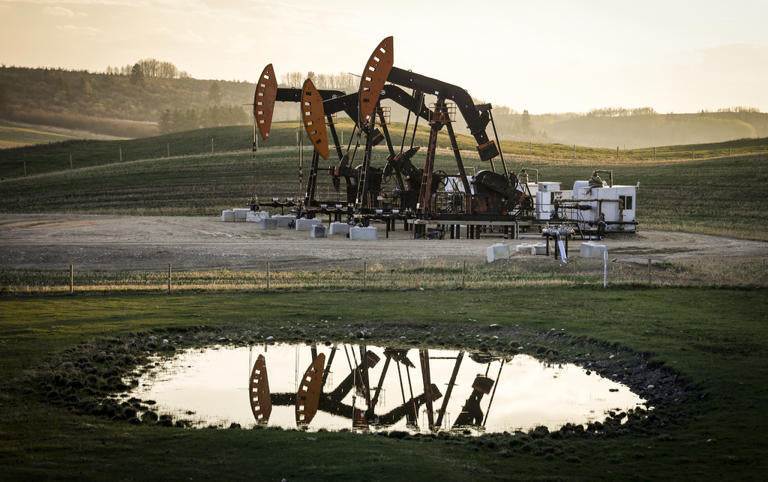
Tariff Threats and U.S.-Canada Oil Trade: Balancing Energy Dependence and Economic Risks
Ashton RouthierShare
Tariff Threats Cast a Shadow Over U.S. Reliance on Canadian Oil Imports
The United States has increasingly leaned on Canadian crude oil to meet its growing energy demands, but this crucial relationship faces potential strain due to proposed tariff threats from President-elect Donald Trump. With over 50% of U.S. crude oil imports coming from Canada—up from 33% in 2013—the interdependence between the two nations has grown significantly. This shift is driven by increased production from Canada’s western provinces and expanding pipeline capacity.
The Stakes: Economic and Energy Implications
The prospect of blanket tariffs as high as 25% on imports from both Canada and Mexico has raised alarms across the energy sector. Experts warn of a ripple effect on the U.S. economy, with higher energy costs contributing to inflation. Solita Marcelli, Chief Investment Officer of the Americas for UBS Financial Services, cautioned that “All three countries remain heavily reliant on each other economically, and hefty taxes on key U.S. imports like crude oil or softwood lumber risk exacerbating U.S. consumer inflation.”
Canada’s response to these threats remains uncertain. While the leader of Ontario has suggested countermeasures such as restricting energy exports and barring American alcohol imports, Alberta’s leadership has taken a more conciliatory approach, aiming to find a resolution without cutting off vital oil exports. As the U.S.’s largest trading partner and primary source of oil imports, Canada’s position is pivotal in maintaining energy stability.
U.S. Oil Dependency: Beyond the Numbers
Despite its own oil boom, which has made the U.S. the world’s largest crude oil producer, the nation remains reliant on imports. This reliance is shaped by a combination of factors:
- Oil Chemistry and Refining Needs: The U.S. primarily produces light, sweet crude oil, while its refining infrastructure is optimized for processing heavier crude—the kind predominantly supplied by Canada.
- Economic Viability: Heavier crude, though harder to refine, is less expensive, making it an attractive import option for U.S. refineries.
- Geography and Proximity: Canada’s closeness and integrated trade relationship with the U.S. make it a convenient and cost-effective source of oil.
These dynamics underscore the complexity of the U.S.-Canada oil relationship, where interdependent systems balance cost, supply, and refining capabilities.
Market Trends: A Fragile Stability
Oil prices have remained relatively stable throughout 2024, with the OPEC cartel limiting production amidst weaker global demand. Falling energy commodity costs, including a 19.5% drop in fuel oil prices in November, have eased inflation pressures. However, tariffs on Canadian oil could disrupt this stability, driving up costs for gasoline and other refined products. This would likely trickle down to consumers, manifesting as higher prices at the pump and broader inflationary pressures.
STW Enviro’s Perspective: Navigating Energy Challenges
At STW Enviro, we recognize the far-reaching implications of tariff-driven uncertainty in the energy sector. Our mission is to promote stability and sustainability in oil transport and refining practices. Here’s how we believe these challenges can be addressed:
- Strengthened Partnerships: Fostering stronger energy trade agreements between the U.S. and Canada can help mitigate the risks of tariff imposition and ensure a stable supply chain.
- Infrastructure Adaptation: Encouraging investment in U.S. refining facilities to process lighter crude oil more efficiently would reduce dependency on heavier Canadian crude.
- Risk Mitigation Strategies: Developing contingency plans to manage price fluctuations and supply disruptions can help buffer the economic impact on consumers.
- Environmental Safeguards: Incorporating advanced spill prevention and containment technologies ensures that the environmental risks of oil transport remain minimized, even as geopolitical tensions rise.
Moving Forward
As tariff threats loom over U.S.-Canada oil trade, the importance of collaborative solutions cannot be overstated. Maintaining the balance of this critical energy relationship is not just an economic necessity but also a matter of consumer welfare and environmental responsibility. By addressing infrastructure gaps, fostering trade stability, and mitigating risks, the U.S. and Canada can navigate these challenges while safeguarding their mutual interests and the environment.